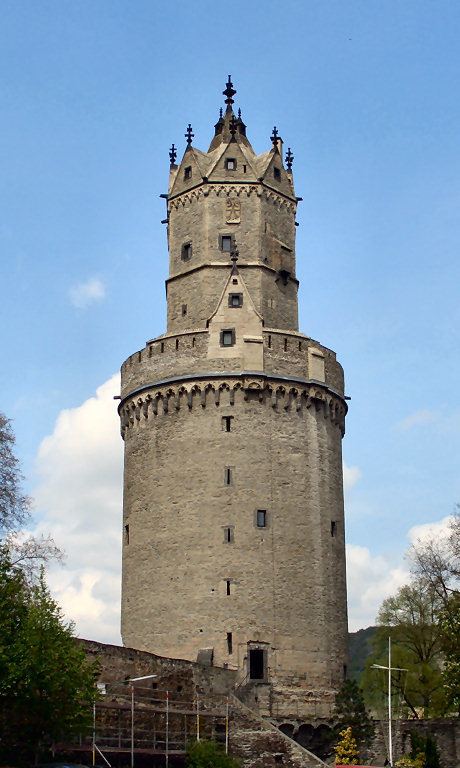 | ||
Abc rides maypole roman tower
The Round Tower (German: Runder Turm) of Andernach in Germany is a large defensive tower, the town's keep and schauinsland (literally "look into the country") dating to the 15th century, and a former watch tower in the town fortifications at the northwest corner of the medieval town wall. It is Andernach's symbol and is one of the mightiest fortified towers of its time.
Contents
History
It was built under the direction of the town council of Andernach in the period before 1440 (round lower section, first mention in the construction records) and from 1448 to 1453 (octagonal upper section) as a fortified watch tower within the town fortifications and known as the Rondentorne. It was probably erected on the site of the northwest corner tower of the Roman castell or another, smaller, earlier structure. The builder in charge of the second phase of construction was municipal master builder, Philipp Preudemann (Philips Preudeman). Whether he also acted as the architect is not known. Over the course of its history, the name of the tower varied from ronder thurn in the 17th century, Runder Thurmin the 18th/19th century and then Runder Turm thereafter. Master carpenter Johann was responsible for all the woodwork, including the installation and removal of the treadwheel operated cranes; Master Engel (Enggel) was the local smith. All the ropes and cables came from the workshop of Klaus von Mendig (Claise van Mendich) and Christian von Düsseldorf (Kirstgain van Duysseldorp). Other masters named were Heinrich Schönbel (Henrich Schoinboil), Arnold von Lieser (Arnolden van Leser) and Johann Meyener. Even one name of the otherwise unnamed journeymen, workers, servants and assistants has been recorded: "In derselven wochen hait geoppert Peter Attenderngin 3 dage, y den dag 6 schillinge, macht 1 mark 6 schillinge." ("In the same week (the week 3–8 September 1453) Peter Attendernchen had worked for 3 days as an odd-job man, each day for 6 shillings, which makes 1 mark, 6 shillings").
The outside tower walls used to be plastered and coloured with a whitish to dark yellowish (ochre) paint to underline the architectonic structure. Rests of the plaster and paint could be found until the mid-19th century.
